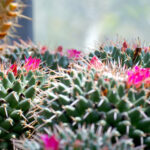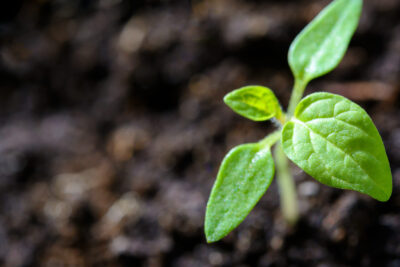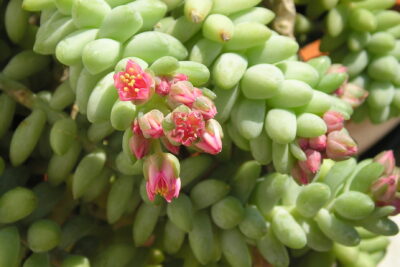
Top 10 Succulents That Flourish in Partial Sunlight: A Guide

Succulents have become incredibly popular in recent years due to their low maintenance and unique appearance. These plants are known for their ability to store water in their fleshy leaves and stems, allowing them to survive in arid conditions. While many succulents thrive in full sunlight, there are also plenty of varieties that can flourish in partial sunlight. This article will explore the top 10 succulents that can thrive in partial sunlight, providing a guide for those looking to add these gorgeous plants to their indoor or outdoor spaces.
We will delve into the characteristics of each succulent and discuss their specific light requirements. We will also provide tips and tricks for caring for these plants, including watering schedules and soil preferences. Additionally, we will highlight the unique features and visual appeal of each succulent, allowing readers to choose the perfect plants to enhance their living spaces. Whether you are a seasoned succulent enthusiast or a beginner looking to start your collection, this guide will provide you with the information you need to successfully grow and care for these stunning plants in partial sunlight.
- Jade plants are a great choice for partial sunlight
- Aloe vera can thrive in areas with partial sunlight
- Echeveria is a popular succulent that does well in partial sunlight
- Haworthia is a low-maintenance succulent that can tolerate partial sunlight
- Sedum is a versatile succulent that can handle partial sunlight
- Agave is a hardy succulent that can thrive in partial sunlight
- Kalanchoe is a colorful succulent that can do well in partial sunlight
- Crassula is a drought-tolerant succulent that can handle partial sunlight
- Sansevieria, also known as snake plant, can tolerate partial sunlight
- Pachyphytum is a unique succulent that can flourish in partial sunlight
- Jade plants are a great choice for areas with partial sunlight
- Aloe vera can thrive even in areas with partial sunlight
- Frequently Asked Questions
Jade plants are a great choice for partial sunlight
If you are looking for a beautiful and low-maintenance succulent that thrives in partial sunlight, look no further than the jade plant. With its thick, glossy leaves and tree-like appearance, the jade plant adds an elegant touch to any indoor or outdoor space.
The jade plant, also known as Crassula ovata, is native to South Africa and is known for its resilience and ability to adapt to various light conditions. While it can tolerate full sun, it truly thrives in partial sunlight, making it an ideal choice for those areas in your home or garden that receive a few hours of direct sunlight each day.
One of the reasons why the jade plant excels in partial sunlight is due to its ability to store water in its leaves and stems. This adaptation allows the plant to survive in dry and arid conditions, making it perfect for those who may forget to water their plants regularly.
In addition to its adaptability, the jade plant is also a symbol of prosperity and good luck in many cultures. It is believed to bring financial success and positive energy to its owners, making it a popular choice for gift-giving and as a housewarming plant.
 Exploring the Beauty of Sedum Sunset Succulent: A Comprehensive Guide
Exploring the Beauty of Sedum Sunset Succulent: A Comprehensive GuideWhen it comes to caring for your jade plant, it is important to provide it with well-draining soil and to allow the soil to dry out between waterings. Overwatering can lead to root rot, which can be detrimental to the plant's health. Fertilizing the jade plant once or twice a year with a balanced succulent fertilizer will also help promote healthy growth.
With its beautiful appearance, low-maintenance nature, and ability to thrive in partial sunlight, the jade plant is undoubtedly one of the top choices for succulent enthusiasts. Whether you are a beginner or an experienced plant lover, adding a jade plant to your collection is a decision you won't regret.
Aloe vera can thrive in areas with partial sunlight
Aloe vera is a popular succulent that is well-known for its healing properties. It is a hardy plant that can thrive in areas with partial sunlight. This makes it a great choice for those who have indoor gardens or live in regions with mild climates. Aloe vera plants can tolerate some shade, but they still need a good amount of sunlight to grow and flourish.
When grown in partial sunlight, aloe vera plants develop larger leaves that are packed with beneficial gel. This gel is not only great for soothing burns and cuts, but it also contains vitamins, minerals, and antioxidants that can nourish your skin. Aloe vera plants have a unique ability to store water in their leaves, enabling them to survive in drier conditions.
If you decide to grow aloe vera indoors, place it near a window that receives indirect sunlight for a few hours each day. This will provide the plant with the necessary light to thrive. Avoid placing it in areas with direct sunlight, as this can scorch the leaves. Remember to water your aloe vera plant sparingly, allowing the soil to dry out completely between waterings.
Echeveria is a popular succulent that does well in partial sunlight
Echeveria is a stunning succulent that is known for its rosette-shaped leaves and vibrant colors. This versatile plant thrives in partial sunlight, making it a perfect addition to any indoor or outdoor space that receives a moderate amount of light.
 Black Beauty: A Guide to Succulents with Stunning Black Leaves
Black Beauty: A Guide to Succulents with Stunning Black LeavesOne of the reasons why Echeveria is so popular is its ability to adapt to different light conditions. While it can tolerate full sun, it prefers to be in partial sunlight, where it can receive a few hours of direct sunlight each day.
When placing your Echeveria in a partial sunlight spot, make sure it is not exposed to intense midday sun, as this can cause sunburn and damage the leaves. Instead, choose a location where it can enjoy morning or late afternoon sun, or a spot with filtered light throughout the day.
Another benefit of Echeveria is its low maintenance requirements. This succulent is drought-tolerant and can survive in dry conditions, making it ideal for busy individuals or those who might forget to water their plants regularly. However, it is important not to overwater Echeveria, as it is susceptible to root rot.
When it comes to soil, Echeveria prefers well-draining soil that allows excess water to escape, preventing soggy roots. You can use a cactus or succulent-specific soil mix or create your own by combining regular potting soil with perlite or sand to improve drainage.
Overall, Echeveria is a fantastic choice for succulent enthusiasts who are looking for a plant that can thrive in partial sunlight. Its stunning appearance, adaptability, and low maintenance requirements make it a top contender for any succulent collection.
Haworthia is a low-maintenance succulent that can tolerate partial sunlight
Haworthia is a popular choice among succulent enthusiasts because of its ability to thrive in partial sunlight. This hardy plant is native to South Africa and belongs to the Asphodelaceae family. With its unique rosette-shaped leaves and intricate patterns, Haworthia adds a touch of elegance to any indoor or outdoor space.
 Best Trailing Succulents: Explore Our Top Picks for Cascading Beauty
Best Trailing Succulents: Explore Our Top Picks for Cascading BeautyOne of the reasons why Haworthia is favored by many is its low-maintenance nature. It doesn't require constant attention or a strict watering schedule, making it a perfect choice for busy individuals or those new to succulent care. However, it's important to note that even though Haworthia can tolerate partial sunlight, it still needs some direct sunlight to grow and thrive.
When it comes to positioning your Haworthia, it's best to place it in a location where it can receive a few hours of indirect sunlight. This can be near a window with a sheer curtain or on a shaded patio. Avoid exposing it to intense, direct sunlight for prolonged periods as it can lead to sunburn and damage the plant.
In terms of watering, Haworthia prefers a well-draining soil mix. Allow the soil to dry out completely between waterings to prevent overwatering, which can cause root rot. During the summer months, when the plant is actively growing, water it more frequently. In contrast, reduce watering during the winter when the plant goes through a dormant period.
Remember to use a pot with drainage holes to ensure excess water can easily escape. This helps prevent soggy soil, which can also lead to root rot. Additionally, Haworthia can benefit from a balanced fertilizer diluted to half strength during the growing season to promote healthy growth.
Overall, Haworthia is a versatile succulent that can adapt well to different lighting conditions. Its ability to tolerate partial sunlight makes it a fantastic choice for those looking to add a touch of greenery to their indoor spaces or brighten up a shaded area in their garden. With proper care and attention to its sunlight and watering needs, Haworthia will thrive and bring joy to any succulent collection.
Sedum is a versatile succulent that can handle partial sunlight
When it comes to succulents that thrive in partial sunlight, Sedum is a top contender. This versatile plant is not only beautiful but also incredibly hardy, making it a popular choice for both indoor and outdoor gardens.
 Succulents: Annuals or Perennials in Their Natural Habitat?
Succulents: Annuals or Perennials in Their Natural Habitat?Sedum's ability to tolerate various light conditions makes it an ideal choice for those who may not have access to full sunlight. Whether you have a shaded balcony or a partially shaded garden, Sedum can still flourish and add a touch of greenery to your space.
Here are some key reasons why Sedum is a great succulent to consider for partial sunlight conditions:
1. Adaptability to different light levels
Sedum is known for its adaptability to a wide range of light conditions. While it appreciates full sun, it can also thrive in partial sunlight. This characteristic makes it a versatile choice for both indoor and outdoor environments.
2. Drought-tolerant nature
Like most succulents, Sedum has adapted to survive in arid environments. It has thick, fleshy leaves that store water, allowing it to withstand periods of drought. This means that even if your partial sunlight area doesn't receive as much rainfall, Sedum can still thrive with minimal water requirements.
3. Variety of shapes and colors
Sedum comes in a wide variety of shapes, sizes, and colors, making it a visually appealing addition to any garden or indoor space. From the vibrant hues of Sedum mexicanum 'Gold Mound' to the unique rosette formations of Sedum pachyphyllum 'Jelly Beans', there is a Sedum variety to suit every taste.
4. Low maintenance requirements
Another reason why Sedum is favored by many gardeners is its low maintenance needs. It is a hardy plant that doesn't require frequent watering or pruning. As long as it receives some sunlight and is planted in well-draining soil, Sedum can thrive with minimal effort on your part.
To sum it up, Sedum is an excellent choice for those seeking succulents that can flourish in partial sunlight. Its adaptability, drought tolerance, visual appeal, and low maintenance requirements make it a top contender for both beginners and experienced gardeners alike.
 Low-Maintenance Plants with Succulent-Like Care and Appearance
Low-Maintenance Plants with Succulent-Like Care and AppearanceAgave is a hardy succulent that can thrive in partial sunlight
Agave is a versatile succulent that can adapt well to various lighting conditions, making it an ideal choice for those who have areas in their garden or home that receive partial sunlight. With its unique rosette-shaped foliage and low maintenance requirements, Agave is a popular choice among succulent enthusiasts.
One of the key features of Agave is its ability to tolerate partial sunlight. While it can survive in full sun, providing it with some shade during the hottest parts of the day can help prevent sunburn and keep its leaves healthy and vibrant. Placing Agave in areas that receive 4-6 hours of direct sunlight or bright indirect light is optimal for its growth.
When selecting the right Agave variety for partial sunlight, consider the size, shape, and color of its leaves. Some popular Agave species that flourish in partial sunlight include:
- Agave parryi: Known for its compact size and silver-green leaves, Agave parryi is a striking addition to any garden. It can tolerate partial shade and is resistant to drought, making it a resilient choice.
- Agave americana: With its large, spiky leaves and impressive size, Agave americana can make a statement in any landscape. It can adapt to partial sunlight and requires minimal watering.
- Agave attenuata: Also known as the Foxtail Agave, this succulent features soft, arching leaves that give it a unique appearance. It can thrive in areas with partial shade and is more tolerant of cooler temperatures.
When growing Agave in partial sunlight, it is essential to provide well-draining soil and avoid overwatering. Agave plants have a natural ability to store water in their leaves, making them more drought-tolerant than other plants. Water them sparingly and allow the soil to dry out between waterings to prevent root rot.
Agave is a hardy succulent that can flourish in partial sunlight. With the right variety selection and proper care, you can enjoy the beauty and resilience of these stunning plants in areas with limited sun exposure.
Kalanchoe is a colorful succulent that can do well in partial sunlight
Kalanchoe is a stunning succulent known for its vibrant and eye-catching colors. This versatile plant thrives in partial sunlight, making it an excellent choice for both indoor and outdoor gardens. With its ability to tolerate lower light levels, Kalanchoe is a great option for those looking to add a pop of color to areas with limited sunlight.
One of the standout features of Kalanchoe is its wide range of colors, including shades of red, pink, orange, yellow, and white. These vibrant hues make it a popular choice for adding visual interest to any space. Whether you prefer bold and vibrant colors or more subtle pastel shades, there is a Kalanchoe variety to suit your taste.
 Discover Fred Ives' Top Recommended Succulent Varieties for Your Home
Discover Fred Ives' Top Recommended Succulent Varieties for Your HomeAside from its beautiful colors, Kalanchoe is also known for its long-lasting blooms. These flowers can last for several weeks or even months, providing a continuous display of beauty. Kalanchoe plants are also relatively low-maintenance, making them perfect for busy individuals or those new to gardening.
When it comes to caring for Kalanchoe, it's important to provide it with the right amount of sunlight. Partial sunlight, which consists of a few hours of direct sunlight combined with indirect or filtered light, is ideal for this succulent. Too much direct sunlight can cause the leaves to burn or scorch, while too little light may result in leggy growth and diminished flowering.
For indoor gardens, place your Kalanchoe near a bright window where it can receive a few hours of direct sunlight each day. If your home doesn't have a suitable window, you can also use a grow light to supplement the natural light. Outdoors, choose a partially shaded area where the plant can enjoy the morning or evening sun without being exposed to intense midday heat.
When it comes to watering, Kalanchoe prefers a well-draining soil that allows excess water to escape. Avoid overwatering, as this can lead to root rot and other issues. Instead, water your Kalanchoe thoroughly when the top inch of soil feels dry to the touch. During the winter months, reduce watering frequency to prevent waterlogged soil.
Kalanchoe is a stunning succulent that thrives in partial sunlight. With its vibrant colors, long-lasting blooms, and low-maintenance nature, it's no wonder why this plant is a favorite among both beginner and experienced gardeners. So go ahead and add some Kalanchoe to your garden or indoor space to enjoy its beauty all year round!
Crassula is a drought-tolerant succulent that can handle partial sunlight
If you're a succulent enthusiast looking for plants that can thrive in partial sunlight, Crassula is a fantastic choice. This drought-tolerant succulent is known for its ability to withstand less intense sunlight and is perfect for those areas in your home or garden that receive a bit of shade.
 Discover the Perfect Sedum Variety for a Vibrant Blue Succulent
Discover the Perfect Sedum Variety for a Vibrant Blue SucculentCrassula, commonly known as Jade Plant or Money Tree, features thick, fleshy leaves and a sturdy stem. Its unique foliage and compact growth make it a popular choice among succulent lovers. While it can tolerate some shade, it still requires a few hours of direct sunlight each day to stay healthy and vibrant.
To successfully care for your Crassula in partial sunlight, it's crucial to find the right balance. Too much shade can lead to elongation of the stems and a leggy appearance. On the other hand, exposing it to excessive sunlight can cause sunburn and damage the delicate leaves.
Here are some essential tips for growing Crassula in partial sunlight:
- Place your Crassula in a location that receives a few hours of direct sunlight, preferably in the morning or late afternoon.
- Ensure that the sunlight is filtered or diffused, as direct harsh rays can scorch the leaves.
- Provide well-draining soil to prevent waterlogging and root rot.
- Water your Crassula thoroughly but allow the soil to dry out between waterings.
- Consider using a succulent-specific fertilizer to provide necessary nutrients.
With proper care, your Crassula will thrive in partial sunlight, displaying its mesmerizing beauty and adding a touch of elegance to any space. Remember to observe your plant closely and make adjustments as needed to ensure it receives the ideal amount of sunlight for optimal growth.
Stay tuned for more succulent recommendations that flourish in partial sunlight!
Sansevieria, also known as snake plant, can tolerate partial sunlight
Sansevieria, also known as snake plant, is a versatile succulent that can thrive in partial sunlight. It is a popular choice among plant enthusiasts due to its low maintenance requirements and adaptability to various lighting conditions.
 Discover the tallest succulent tree species for your garden
Discover the tallest succulent tree species for your gardenThis succulent is native to tropical regions of West Africa and belongs to the Asparagaceae family. It features long, upright leaves that grow in a rosette pattern, resembling the shape of a snake, hence the common name "snake plant."
One of the remarkable qualities of Sansevieria is its ability to tolerate a wide range of lighting conditions. While it prefers bright, indirect sunlight, it can also survive in areas with partial sunlight. This makes it an excellent choice for indoor spaces with limited natural light.
When placed in partial sunlight, Sansevieria exhibits slower growth compared to when it receives more intense light. However, this can be advantageous for those who prefer a low-maintenance plant that doesn't require frequent pruning or repotting.
In addition to its adaptability to lighting conditions, Sansevieria is also known for its air-purifying properties. The plant has been recognized by NASA's Clean Air Study for its ability to remove toxins from the air, such as formaldehyde and benzene. This makes it a great choice for improving indoor air quality.
When caring for Sansevieria, it is important to avoid overwatering as it is prone to root rot. The plant prefers well-draining soil and should only be watered when the top inch of soil feels dry to the touch. In terms of fertilizer, a balanced houseplant fertilizer can be applied every two to three months during the growing season.
Sansevieria is a versatile succulent that can thrive in partial sunlight. Its ability to tolerate various lighting conditions, along with its air-purifying properties, makes it an excellent choice for both indoor and outdoor spaces. With proper care and attention, this plant can bring beauty and freshness to any environment.
Pachyphytum is a unique succulent that can flourish in partial sunlight
 Discover the Top Orange Succulent Plants to Enhance Your Home
Discover the Top Orange Succulent Plants to Enhance Your HomePachyphytum, also known as the "Jelly Bean Plant," is a fascinating succulent that thrives in partial sunlight conditions. This plant is native to Mexico and has become increasingly popular among succulent enthusiasts due to its stunning appearance and low-maintenance requirements.
One of the remarkable features of Pachyphytum is its ability to adapt to different light levels. While it can tolerate direct sunlight, it prefers partial sunlight, making it an excellent choice for indoor spaces with bright, indirect light.
The leaves of Pachyphytum are thick and fleshy, storing water for extended periods. This adaptation allows the plant to survive in drier environments and makes it an ideal candidate for those who may occasionally forget to water their plants.
When exposed to partial sunlight, Pachyphytum displays a vibrant array of colors. Its leaves can range from pale green to shades of pink, purple, or even blue. This colorful display adds an attractive touch to any succulent collection or indoor garden.
To ensure the optimal growth of your Pachyphytum, place it near a window with filtered sunlight or provide it with artificial grow lights. Avoid exposing it to intense, direct sunlight for prolonged periods, as this may cause sunburn and damage the leaves.
When it comes to watering, Pachyphytum prefers a well-draining soil mixture. Water the plant thoroughly, allowing the excess water to drain out completely. Avoid overwatering, as it can lead to root rot and other issues. Let the soil dry out slightly between waterings to prevent any moisture-related problems.
Overall, Pachyphytum is an excellent choice for succulent enthusiasts who are looking for a unique and adaptable plant that can flourish in partial sunlight. Its stunning appearance and low-maintenance nature make it a delightful addition to any indoor garden or succulent collection.
 Can Succulents Display Both Red and Purple Colors Simultaneously?
Can Succulents Display Both Red and Purple Colors Simultaneously?Jade plants are a great choice for areas with partial sunlight
If you're looking for a stunning succulent that can thrive in areas with partial sunlight, look no further than the Jade plant. Also known as Crassula ovata, this popular succulent is well-adapted to various light conditions, making it a versatile choice for both indoor and outdoor gardens.
One of the key reasons why Jade plants flourish in partial sunlight is their ability to store water in their fleshy leaves and stems. This adaptation allows them to withstand periods of lower light intensity without compromising their health and growth.
Here are some important points to consider when caring for Jade plants in areas with partial sunlight:
1. Placement:
Find a spot where your Jade plant can receive at least four hours of indirect sunlight each day. Placing it near a north-facing window or in a shaded area of your garden can provide the right balance of light.
2. Protection from intense sunlight:
While Jade plants can tolerate partial sunlight, they may struggle in direct, intense sunlight. If you live in an area with scorching summers, consider providing some shade during the hottest parts of the day to prevent leaf burn or dehydration.
3. Watering:
As with most succulents, it's important not to overwater your Jade plant. Allow the soil to dry out between waterings, and be cautious not to let the roots sit in soggy soil. Overwatering can lead to root rot and other issues.
4. Soil:
Ensure your Jade plant is potted in well-draining soil. A mixture of cactus potting mix and perlite or sand works well to provide adequate drainage.
5. Temperature and humidity:
Jade plants prefer moderate temperatures and can tolerate a wide range, but they are sensitive to extreme cold or hot conditions. Keep them away from drafts and maintain a temperature between 65-75°F (18-24°C) for optimal growth.
With their thick, glossy leaves and attractive tree-like appearance, Jade plants add a touch of elegance to any space. Whether you're a beginner or an experienced succulent enthusiast, the Jade plant is a fantastic choice that will thrive in areas with partial sunlight.
Aloe vera can thrive even in areas with partial sunlight
When it comes to succulents that can thrive in partial sunlight, Aloe vera is undoubtedly at the top of the list. Known for its healing properties, this versatile succulent is not only easy to care for but can also withstand less than optimal lighting conditions.
Aloe vera is native to arid regions and has adapted to survive in environments with limited access to direct sunlight. Its thick, fleshy leaves store water, allowing it to withstand periods of drought. This makes it an excellent choice for those who have areas in their homes or gardens that receive only a few hours of sunlight each day.
Although Aloe vera prefers bright, indirect light, it can tolerate lower light conditions. Placing it near a window that receives partial sunlight for a few hours a day will provide it with enough light to thrive. Just be cautious not to expose it to intense, direct sunlight for extended periods, as it may cause the leaves to turn yellow or brown.
When it comes to watering, Aloe vera prefers to dry out between waterings. This means that it can withstand occasional neglect, making it an ideal choice for busy individuals or those new to succulent care. However, it's important to note that overwatering can lead to root rot, so it's crucial to ensure the soil is well-draining.
Aloe vera's versatility extends beyond its adaptability to partial sunlight. It is also known for its medicinal properties, with its gel being used to soothe sunburns, moisturize the skin, and promote healing. Having this succulent in your collection not only adds beauty to your space but also provides a natural remedy for various skin ailments.
If you're looking for a succulent that can flourish in areas with partial sunlight, Aloe vera is an excellent choice. Its ability to adapt to less than ideal lighting conditions, combined with its low-maintenance nature and medicinal properties, make it a must-have for any succulent enthusiast.
Echeveria is a stunning succulent that is highly sought after by plant enthusiasts. Known for its rosette-shaped leaves and vibrant colors, it is a perfect addition to any garden or indoor space. One of the reasons why Echeveria is so popular is because it can thrive in partial sunlight.
This succulent is well-adapted to various light conditions, making it a versatile choice for those who may not have full sun exposure. While Echeveria can tolerate some shade, it still requires a few hours of direct sunlight each day to thrive.
When placing your Echeveria in partial sunlight, it is important to find the right balance. Too much shade can cause the plant to stretch or become leggy, leading to weak and floppy growth. On the other hand, exposing it to too much direct sunlight can result in sunburned leaves.
To ensure your Echeveria thrives in partial sunlight, it is recommended to place it in an area where it receives morning sun and afternoon shade. This provides the plant with the necessary light it needs while protecting it from the intense afternoon rays.
Another important factor to consider when growing Echeveria in partial sunlight is the soil. Well-draining soil is crucial for the health and longevity of this succulent. Make sure to use a well-draining potting mix specifically formulated for succulents to prevent root rot.
Watering is another aspect to pay attention to. Echeveria, like most succulents, is drought-tolerant and does not require frequent watering. When growing in partial sunlight, it is essential to water the plant only when the top inch of soil is dry. Overwatering can lead to root rot and other issues.
Echeveria is a top choice for succulent lovers who have partial sunlight in their growing space. With its stunning appearance and ability to thrive in various light conditions, it is a must-have for any succulent collection. Just remember to provide it with the right balance of light, well-draining soil, and appropriate watering to ensure its overall health and beauty.
If you're looking for a beautiful succulent that can thrive in areas with partial sunlight, then Haworthia is a perfect choice. This versatile plant belongs to the Asphodelaceae family and is native to South Africa. Haworthia is known for its attractive rosette-shaped leaves and unique patterns, making it a popular choice among succulent enthusiasts.
One of the great advantages of Haworthia is its ability to tolerate partial sunlight. While many succulents require full sun exposure to thrive, Haworthia can adapt to different light conditions, making it an ideal addition to your indoor or outdoor succulent collection. It can handle a few hours of direct sunlight, but it also thrives in areas with filtered or indirect light.
When growing Haworthia indoors, it is best to place them near a window with filtered light, such as a north or east-facing window. This will provide them with the right amount of sunlight without exposing them to intense heat and potential sunburn. Outdoors, they can be placed in areas with partial shade, such as under a tree or on a covered patio.
When it comes to care, Haworthia is relatively low-maintenance compared to other succulents. It requires well-draining soil to prevent root rot and should be watered sparingly, allowing the soil to dry out between waterings. During the winter months, when their growth slows down, watering can be further reduced. Overwatering can lead to root rot and cause the plant to decline.
Additionally, Haworthia prefers moderate temperatures ranging from 65°F to 80°F (18°C to 27°C). It is important to protect them from extreme heat or cold, as they are more sensitive to temperature fluctuations compared to some other succulent varieties.
If you're seeking a low-maintenance succulent that can thrive in areas with partial sunlight, Haworthia is an excellent choice. Its ability to adapt to different light conditions, along with its striking appearance, makes it a must-have for any succulent enthusiast. With proper care and the right light exposure, Haworthia will flourish and bring beauty to your indoor or outdoor space.
Sedum is a versatile succulent that thrives in partial sunlight. It is a popular choice for both indoor and outdoor gardens due to its ability to adapt to various light conditions. Sedum is known for its thick, fleshy leaves and its ability to store water, making it a low-maintenance plant.
When grown in partial sunlight, Sedum will display vibrant hues and maintain its compact form. It is important to place Sedum in an area where it receives at least 4-6 hours of sunlight per day. This succulent can tolerate some shade, but too much shade can cause it to become leggy and lose its vibrant colors.
In terms of care, Sedum requires well-draining soil and should be watered sparingly. Overwatering can lead to root rot, so it is best to let the soil dry out between waterings. This drought-tolerant succulent is an excellent choice for those who want to add a touch of color to their garden or indoor space without extensive maintenance.
Agave is a versatile and resilient succulent that is well-suited to growing in areas with partial sunlight. With its thick, fleshy leaves and ability to store water, it can tolerate and even thrive in conditions where other plants may struggle.
Here are some key reasons why agave is an excellent choice for those seeking succulents that flourish in partial sunlight:
- Drought Tolerance: Agave is highly adapted to arid environments and can withstand periods of drought. Its ability to store water in its leaves and roots allows it to survive in areas with limited rainfall or infrequent watering.
- Low Maintenance: Once established, agave requires minimal care. It is a hardy plant that can tolerate neglect and is less prone to pests and diseases compared to other plants.
- Attractive Foliage: Agave boasts an array of stunning foliage, ranging from spiky, sword-like leaves to those with intricate patterns and variegation. These unique characteristics make agave a visually appealing addition to any garden or indoor space.
- Adaptability: Agave is adaptable to a wide range of soil types, making it suitable for various growing conditions. It can thrive in well-draining soil, including sandy or rocky soil, making it an ideal choice for gardens with partial sunlight.
- Multiple Varieties: There are numerous agave varieties available, each with its own distinct characteristics. From the popular Agave americana with its large size and striking appearance to the compact Agave parryi, there is a variety to suit every preference and space.
If you're looking for succulents that can thrive in partial sunlight, agave is a top contender. Its ability to tolerate drought, low maintenance requirements, attractive foliage, adaptability, and diverse range of varieties make it an excellent choice for any succulent enthusiast.
When it comes to succulents that thrive in partial sunlight, Kalanchoe is definitely a top contender. With its vibrant colors and unique foliage, it adds a pop of beauty to any garden or indoor space. This succulent is known for its ability to tolerate a wide range of light conditions, making it a perfect choice for those areas that receive some shade during the day.
One of the reasons why Kalanchoe can flourish in partial sunlight is its ability to store water in its leaves. This adaptation allows it to withstand periods of drought and survive in less than ideal light conditions. However, it's important to note that while Kalanchoe can tolerate partial sunlight, it still needs some direct sunlight to thrive.
When growing Kalanchoe indoors, place it near a window that receives indirect sunlight for a few hours a day. If you're growing it outdoors, find a spot where it can get a few hours of morning or late afternoon sun, while being protected from intense midday heat.
Another advantage of Kalanchoe is its low maintenance nature. It doesn't require frequent watering and can handle dry periods well. However, be cautious not to overwater it, as succulents are prone to root rot when sitting in waterlogged soil.
With its dazzling blooms and ability to thrive in partial sunlight, Kalanchoe is a top choice for succulent enthusiasts looking to add a touch of color to their gardens or indoor spaces. Whether you're a beginner or an experienced gardener, this succulent is sure to impress with its resilience and beauty.
If you're looking for a stunning succulent that can thrive in partial sunlight, look no further than Crassula. This drought-tolerant beauty can handle those bright but not overly intense rays, making it a perfect addition to your collection.
Crassula comes in various shapes and sizes, from the iconic Jade Plant (Crassula ovata) with its thick, oval-shaped leaves to the intricate Crassula perforata with its stacked, triangular foliage. No matter which variety you choose, you can expect a succulent that will bring a touch of elegance to your garden or indoor space.
One of the reasons why Crassula flourishes in partial sunlight is its ability to adapt to different light conditions. This hardy succulent can handle lower light levels and still maintain its vibrant colors. However, it's important to note that Crassula may stretch or become leggy if kept in very low light for extended periods. So, providing it with some exposure to partial sunlight is ideal.
When it comes to caring for your Crassula, you'll find that it's a relatively low-maintenance plant. It prefers well-draining soil and only requires watering when the top inch of the soil is dry. Overwatering can lead to root rot, so be sure to let the soil dry out between waterings.
In addition to its ability to tolerate partial sunlight, Crassula is also known for its air-purifying qualities. So, not only will it add beauty to your surroundings, but it will also help to improve the air quality in your home or office.
Whether you're a seasoned succulent enthusiast or just starting your collection, Crassula is definitely a must-have. Its ability to thrive in partial sunlight, coupled with its striking appearance and easy care requirements, make it an excellent choice for any succulent lover.
Sansevieria, also known as snake plant, is a popular succulent that can thrive in partial sunlight conditions. This versatile plant is known for its long, upright leaves that come in various shades of green and yellow.
One of the reasons why Sansevieria is a great choice for partial sunlight is its ability to adapt to different light conditions. It can tolerate both bright and low light environments, making it ideal for indoor spaces with limited sunlight.
When placed in partial sunlight, Sansevieria can maintain its vibrant colors and grow at a steady pace. It can handle a few hours of direct sunlight each day without getting scorched or damaged. However, it's important to note that excessive exposure to direct sunlight can cause the plant's leaves to become pale or bleached.
Sansevieria is also an excellent choice for beginners as it is low-maintenance and drought-tolerant. It can withstand periods of neglect and doesn't require frequent watering. This makes it a perfect addition to offices, bedrooms, or any other space that doesn't receive direct sunlight for extended periods.
Overall, Sansevieria is a fantastic succulent that can thrive in partial sunlight. Its adaptability, low-maintenance nature, and beautiful foliage make it a top choice for succulent enthusiasts of all levels.
Pachyphytum: A Unique Succulent for Partial Sunlight
If you're looking for a unique succulent that can thrive in partial sunlight, look no further than the Pachyphytum. This stunning plant features rosettes of plump, fleshy leaves that come in a variety of colors and textures. With the right care and a bit of sunlight, the Pachyphytum can bring a touch of beauty to any indoor or outdoor space.
- Light: Pachyphytum plants prefer bright, indirect sunlight. They can tolerate partial shade but need some direct sunlight to maintain their vibrant colors.
- Watering: As with most succulents, Pachyphytum plants thrive in well-draining soil. Allow the soil to dry out between waterings and avoid overwatering, as this can lead to root rot.
- Temperature: Pachyphytum plants prefer moderate temperatures between 60-75°F (15-24°C). They can tolerate slightly cooler temperatures but should be protected from frost.
- Soil: Use a well-draining succulent or cactus soil mix when planting your Pachyphytum. This will help prevent waterlogged roots and promote healthy growth.
- Fertilizer: Feed your Pachyphytum with a balanced, water-soluble fertilizer diluted to half strength during the growing season. Avoid fertilizing during the winter months.
- Propagation: Pachyphytum can be propagated through leaf cuttings or by separating offsets, also known as "pups," from the main plant. Allow the cuttings or pups to callous over before planting them in well-draining soil.
- Common Varieties: Some popular Pachyphytum varieties include 'Moonstones,' 'Little Jewel,' 'Blue Haze,' and 'Silver Star.'
- Additional Care Tips: To encourage compact growth, pinch back the tips of the Pachyphytum plant. This will help maintain its shape and prevent leggy growth.
With its unique appearance and ability to thrive in partial sunlight, the Pachyphytum is a fantastic addition to any succulent collection. Whether you're a seasoned plant enthusiast or just starting your green journey, this succulent is sure to captivate with its beauty and relatively low maintenance requirements.
Frequently Asked Questions
1. Can succulents survive in partial sunlight?
Yes, many succulents can thrive in partial sunlight as long as they receive at least 4-6 hours of direct sunlight per day.
2. Do succulents need direct sunlight to grow?
While succulents can tolerate partial sunlight, they generally need some direct sunlight to grow and maintain their vibrant colors.
3. What are some succulents that do well in partial sunlight?
Some succulents that thrive in partial sunlight include Echeveria, Haworthia, Sedum, and Aloe Vera.
4. How can I tell if my succulent is getting enough sunlight?
If your succulent is getting enough sunlight, it will grow compact, have vibrant colors, and its leaves will not stretch or become etiolated.
If you want to read more articles similar to Top 10 Succulents That Flourish in Partial Sunlight: A Guide, you can visit the Varieties and Colors category.






You Must Read